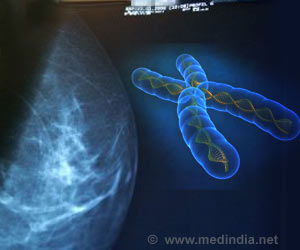To treat Huntington’s disease, small RNA or sRNAs have been identified as the potential therapeutic target. tRNA fragments cause neurotoxicity in patients.

‘To treat Huntington’s disease, small RNA or sRNAs have been identified as the potential therapeutic target. tRNA fragments cause neurotoxicity in patients.’
Read More..




This new study has identified a type of ribonucleic acid (RNA) as a potential therapeutic target for the treatment of the disease. These small RNA or sRNAs molecules have an important functions in the regulation of gene expression.Read More..
According to the study, sRNAs take part in the development of the disease. These results help to design new specific drugs to block the activity of these intermediary molecules that can help researchers to understand the information in the genes.
An Inventive Technique
The aim of the study was to understand the toxic potential of the series of sRNAs that are created in the brain of patients with Huntington's disease. Identification of toxicity mechanisms is important to understand how the disease evolves and to develop the right drugs and therapeutic strategies.
To answer this question, the researchers isolated sRNAs from the brain of patients with Huntington's and from people without this disease, for comparison. They administrated these molecules in the brain of normal mice and analyzed whether the mice developed abnormalities similar to those in the human disease.
Advertisement
The result of this experiment in normal mice shows that sRNAs in patients with Huntington's are enough to cause a similar pathology including motor alterations, transcriptional changes similar to those observed in the human disease and mice models, specific affectation of the most affected neuronal type during the course of the disease, neuronal loss and neuroinflammation.
These results suggested a new view on the role of the different types of sRNAs in the progress of the disease.
The researchers said, “To date, researchers showed that both the mHTT protein and the RNA that codes it and which has CAG repeats, contribute to neurotoxicity. However, toxic effects related to RNAs with CAG repeats do not explain certain alterations that are important within the context of the pathology, for instance, the specific neuronal affectation or transcriptional alterations. These results -the researcher continues-, show different types of sRNAs created in the patients' brains would be likely to take part in the pathogenesis.”
This study shows that the derived fragments of RNAs called tRNA fragments (tRFs) are the most altered type of sRNAs in the brain of patients with Huntington's. Neurotoxicity can be caused by a specific tRF suggesting that tRFS play a part in the damaging effects related to sRNAs in the affected patients. The main aim after this study is to understand the functional relevance of different classes of sRNAs, with special emphasis on tRFs that are abundant in affected human brains.
Eulàlia Martí has highlighted that understanding the dynamics of the expression of toxic classes in brain regions and in the evolution of the disease is crucial to have a full view of their implication in the pathological process.
Biomarkers
Additionally, these molecules can also be used as potential biomarkers of the disease as there are multiple evidence has shown that the changes in the RNAs expression occur before the manifestation of the symptoms. The researchers have said that these changes can be seen in the biofluids such as plasma and this fact can grant these types a great value as biomarkers.
These results can also have implications in the treatment of other diseases.
The researchers concluded, “Alterations in the sRNAs expression are detected early in many neurodegenerative diseases, and therefore, we can find a broader study field to understand what classes can contribute to specific aspects related to neurodegeneration and neuroinflammation.”
Source-Medindia









